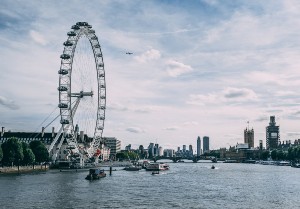#LockdownClimateChange: London CO2 emissions fall by 59% during COVID-19 lockdown
19 May 2020

Carbon dioxide (CO2) emissions in European cities has reduced by up to 75% due to the COVID-19 lockdown, with a 59% reduction in London, a new study has revealed.
Scientists from the University of Reading and the UK Centre for Ecology & Hydrology analysed data from long-term monitoring sites in seven European cities to provide clear evidence of a dramatic reduction in CO2 emissions.
The London data suggests people making fewer car journeys is likely to be a major reason for its drop in emissions. The scientists say this makes it even more critical that people continue with low-carbon behaviours they have adopted during lockdown after the pandemic has passed.
Professor Janet Barlow, Professor of Environmental Physics at the University of Reading, and co-author of the study, said: “The longer-term impact of the lockdown on emissions is difficult to predict because behaviours might change as lockdown rules are relaxed.
“Some people may prefer to use private cars rather than public transport to avoid the risk of contracting COVID-19, which may cause a fast growth of emissions that may exceed those of the pre-lockdown period.
“On the other hand, the lockdown may kick-start a new enthusiasm for walking and cycling, and some cities are now investigating measures to promote alternatives to car use. In addition, regular home working may remain the norm for many people.”
London’s emissions measurements came from the BT Tower Atmospheric Observatory in central London, which showed there was a 59% reduction in daytime CO2 emissions there since the start of the lockdown on 23 March compared with the long-term average for this time of year.
This reduction very closely mirrors the reduction of 60% in traffic flow in central London reported by Transport for London during the first five weeks of UK lockdown.
Previous analyses of CO2 emission reductions have been based on estimates of changes in traffic, industrial and commercial activity during the lockdown.
Changes in atmospheric concentrations of CO2 and other greenhouse gases can be difficult to interpret because they depend strongly on meteorological conditions. Direct measurements of the emissions themselves are hence required but relatively few sites are equipped to do this.
It is also difficult to calculate CO2 emissions from individual sources, such as traffic, natural gas usage for heating of buildings, and exhalation from people – particularly as these are mitigated slightly by carbon ‘sinks’, mainly through the uptake of CO2 by vegetation in parks, gardens and streets.
Dr Eiko Nemitz of the UK Centre for Ecology & Hydrology (UKCEH) said: “The 190m-tall BT Tower in central London is an excellent platform for pollution monitoring at the heart of Europe's largest city; these measurements offer a unique insight into changes in fossil fuel use and CO2 emissions both during the lockdown and as we gradually come out of it. They will also help us understand how emissions of other pollutants have changed over this unprecedented period.”
Dr Nemitz added: “The fact that the reduction in CO2 emissions in central London almost exactly correlates with the reduction in traffic provides further evidence that vehicle emissions are a major source of CO2 in London, and that traffic is closely linked with other CO2-emitting activities such as the heating of shops and offices.
“The short-term reductions in emissions will not markedly change global atmospheric concentrations of CO2 and global warming. However, measurements of pollution during the lockdown and as it eases will provide valuable evidence on how air quality might change as sources of emissions are reduced, for example as part of the UK’s transition to net zero greenhouse gas emissions.”
The BT Tower Atmospheric Observatory collaborates with the Integrated Carbon Observation System (ICOS), a European-wide greenhouse gas research network.
Measurements of CO2 emission reductions from monitoring sites elsewhere in Europe ranged from 8% in a highly vegetated urban area of Berlin to 75% in the city centre of Heraklion, Greece. Reductions in CO2 emissions in parts of Florence, Basel and Helsinki during the lockdowns there were around 40%.
Emissions of the other main greenhouse gases, methane (CH4) and nitrous oxide (N2O) are likely to have decreased to a lesser extent, because key sources for these gases such as leaks from the gas supply network and landfill sites for methane, and agricultural activity for both gases, will have remained largely unaffected by COVID-19.
Measurements from the BT Tower show that daytime reductions in methane emissions in London compared to pre-lockdown levels have varied significantly, with the average daytime drop being 44%.
#LockdownClimateChange
Coronavirus lockdown measures are showing how people can make longer-term changes to tackle climate change. The University of Reading is encouraging people to show how they will #LockdownClimateChange by pledging to continue with a lockdown behaviour or activity, or make a different change, and highlighting how these can take action on climate change.
Find out more here https://archive.reading.ac.uk/2020/April/pr840322.html
